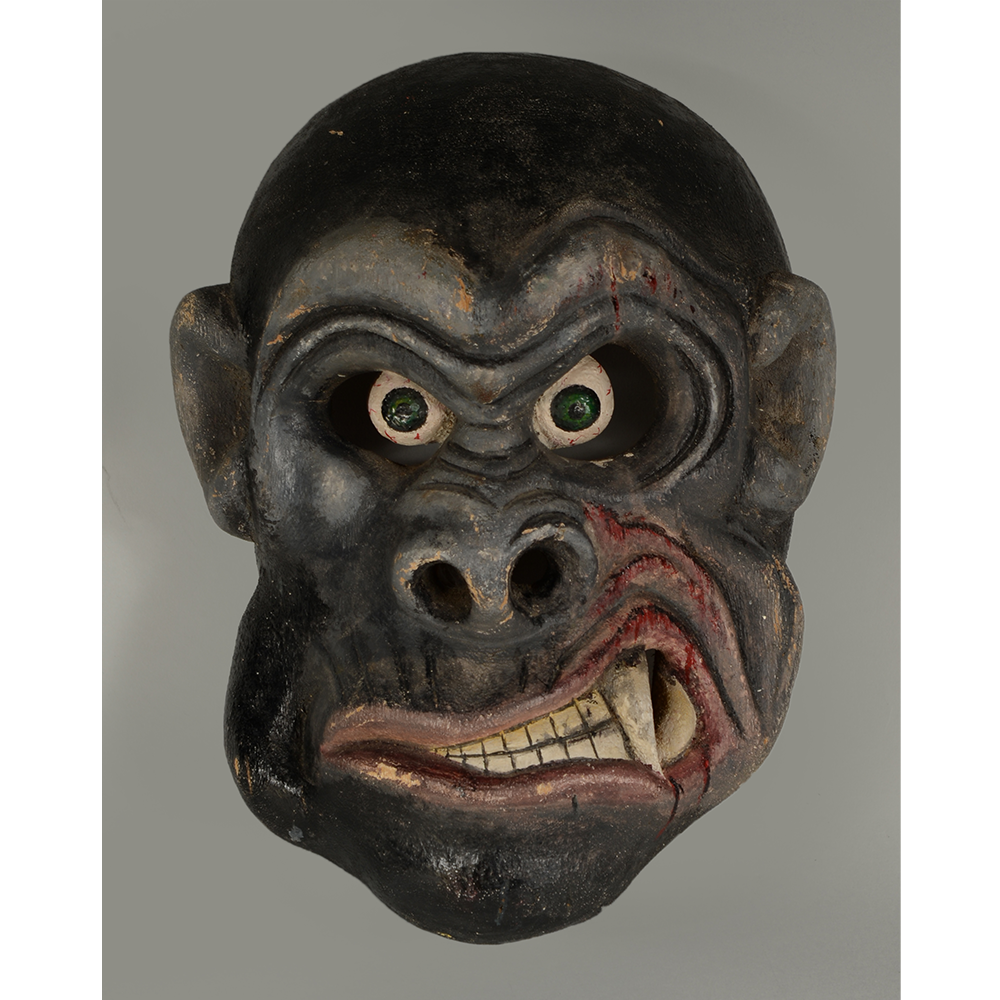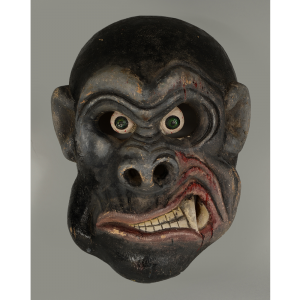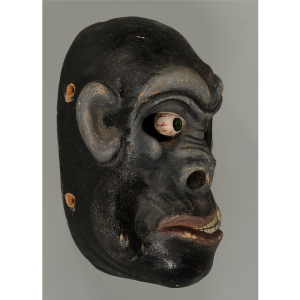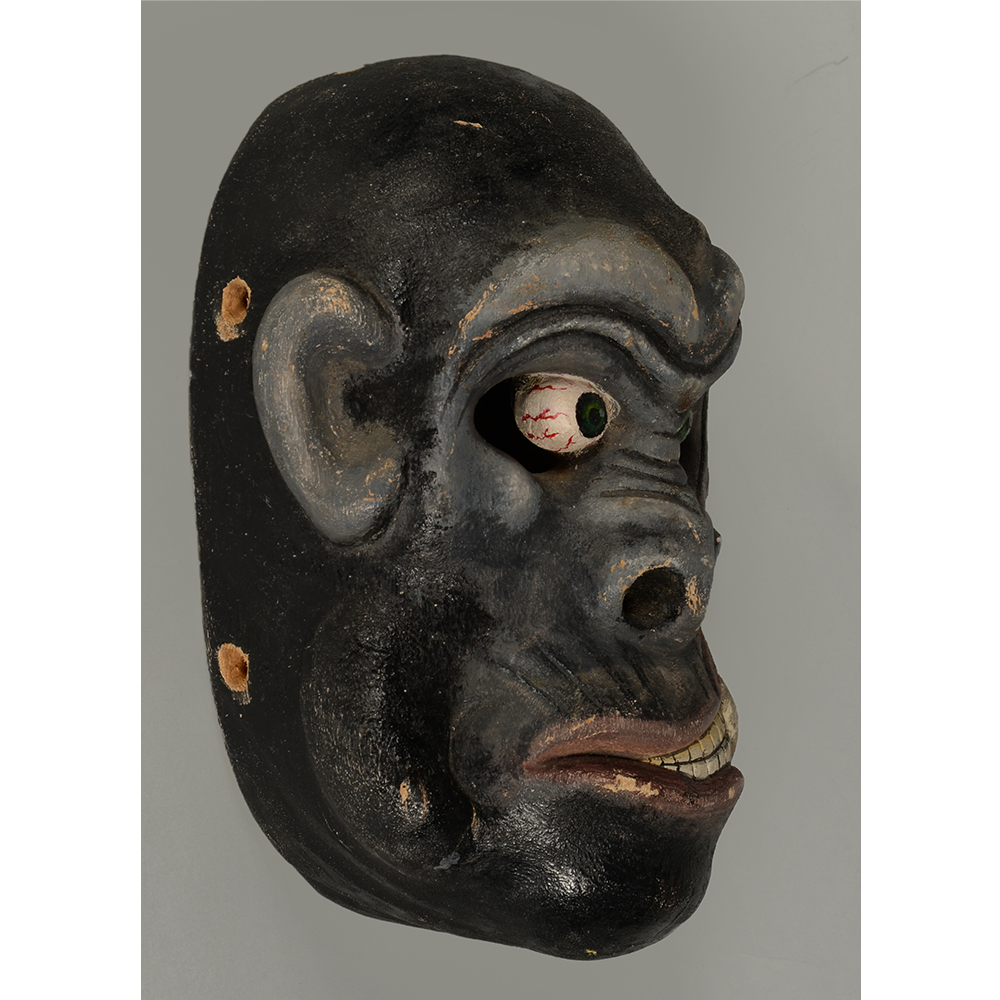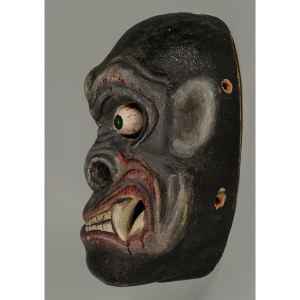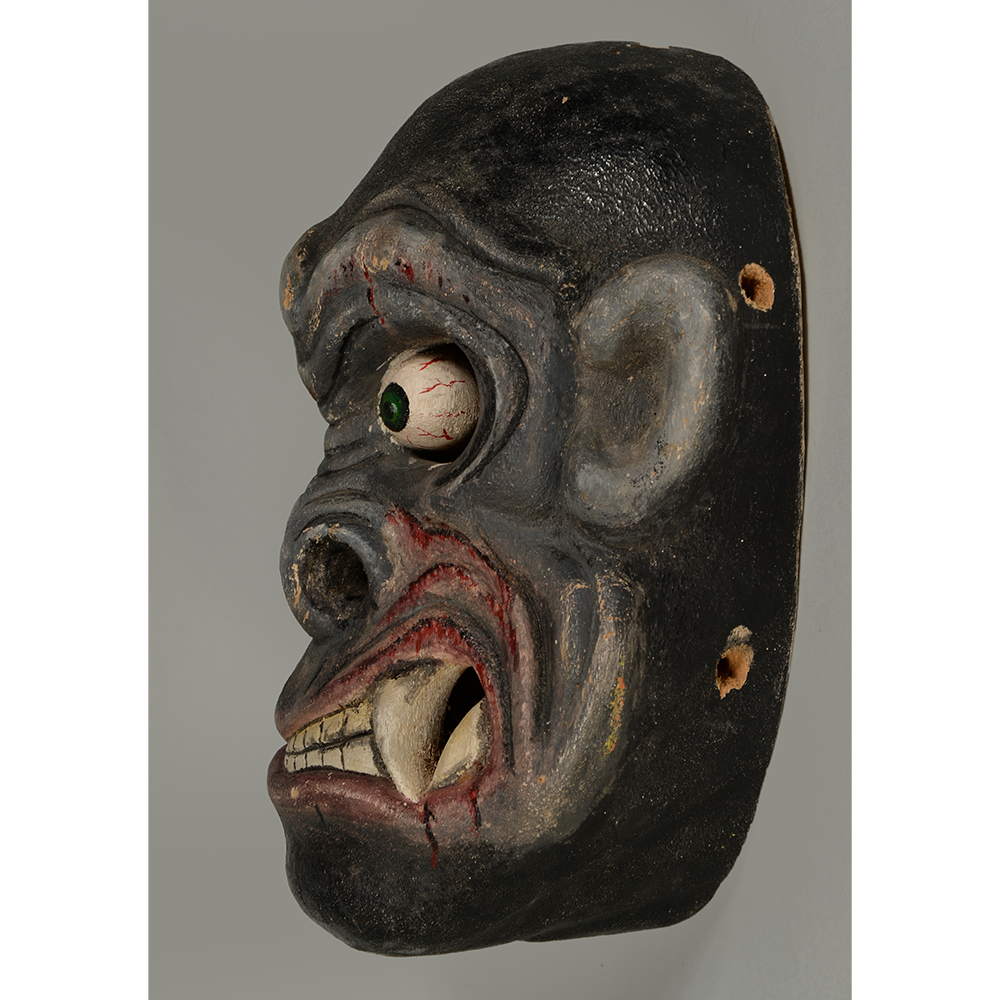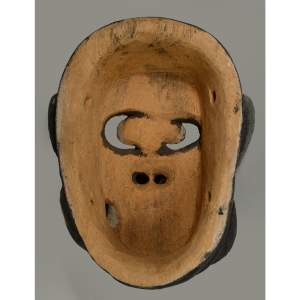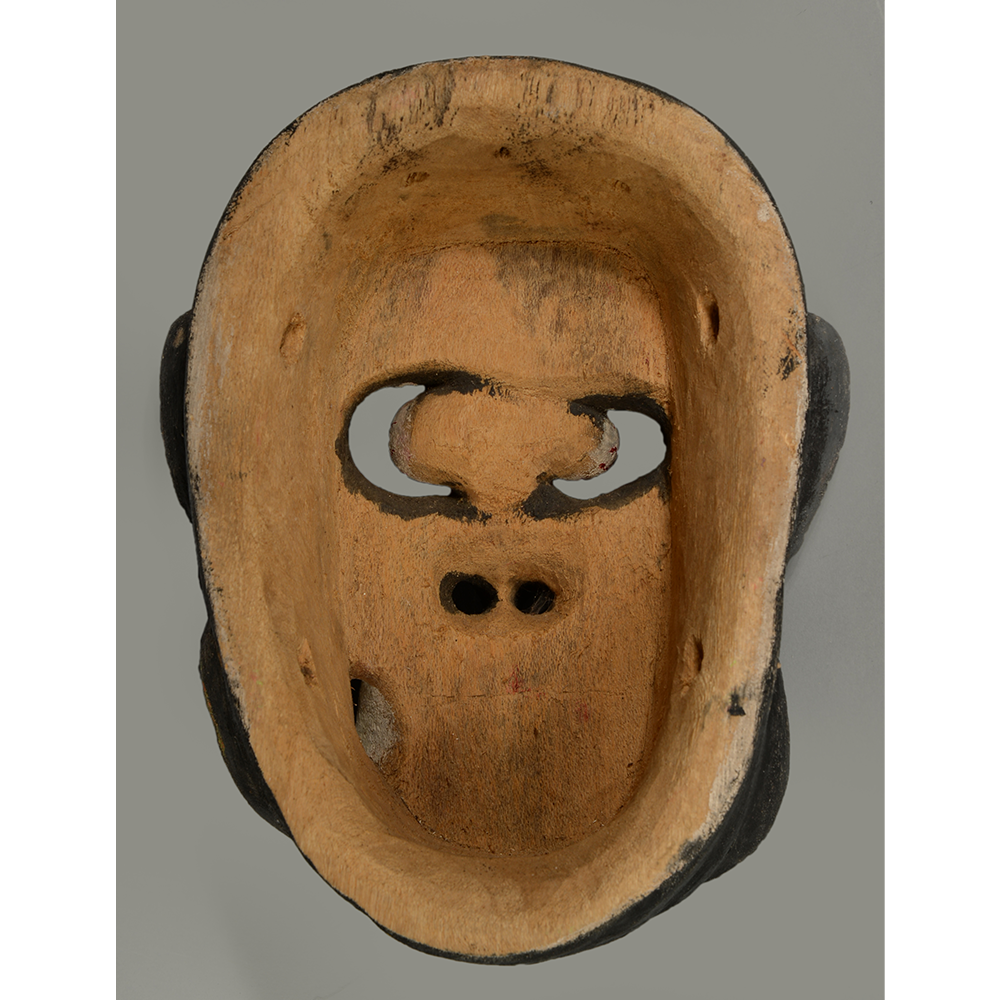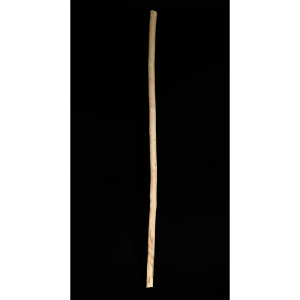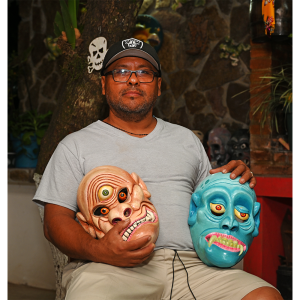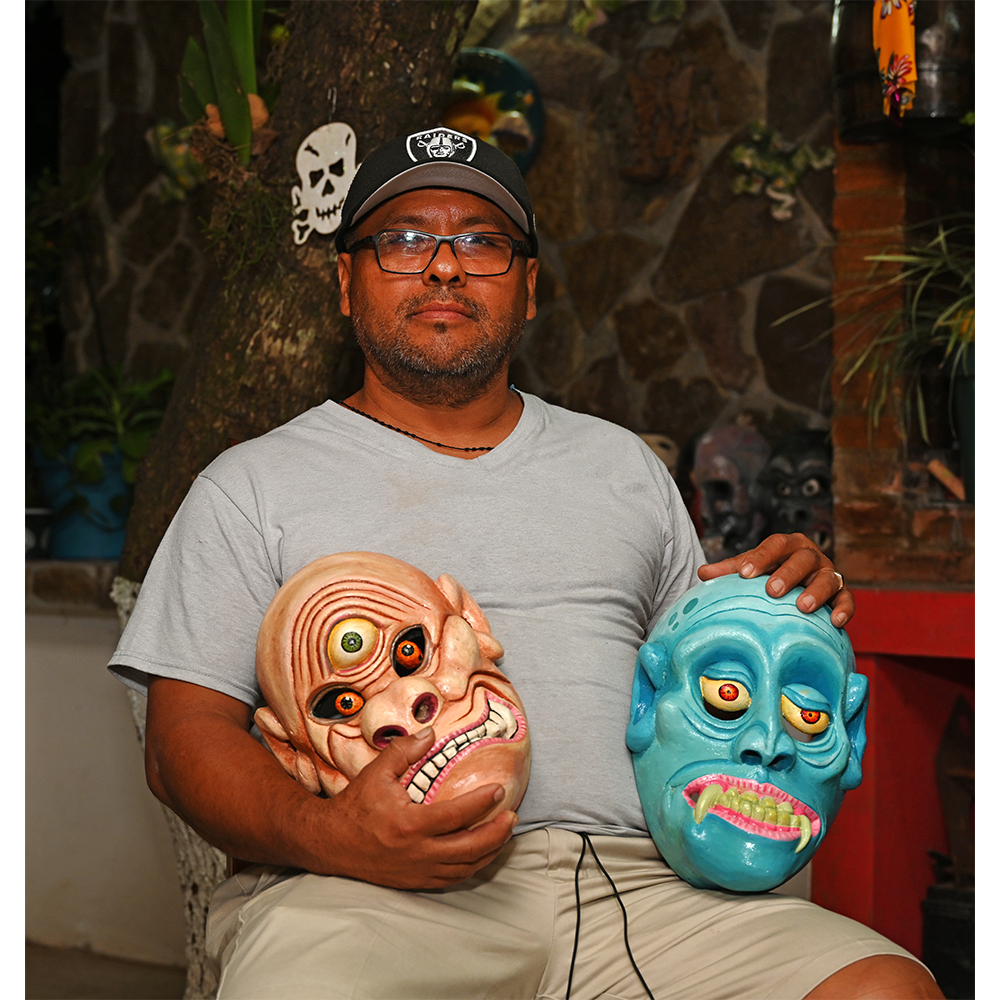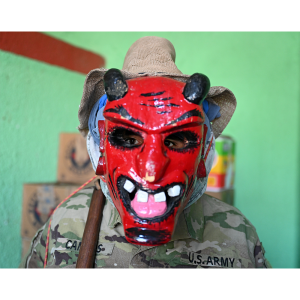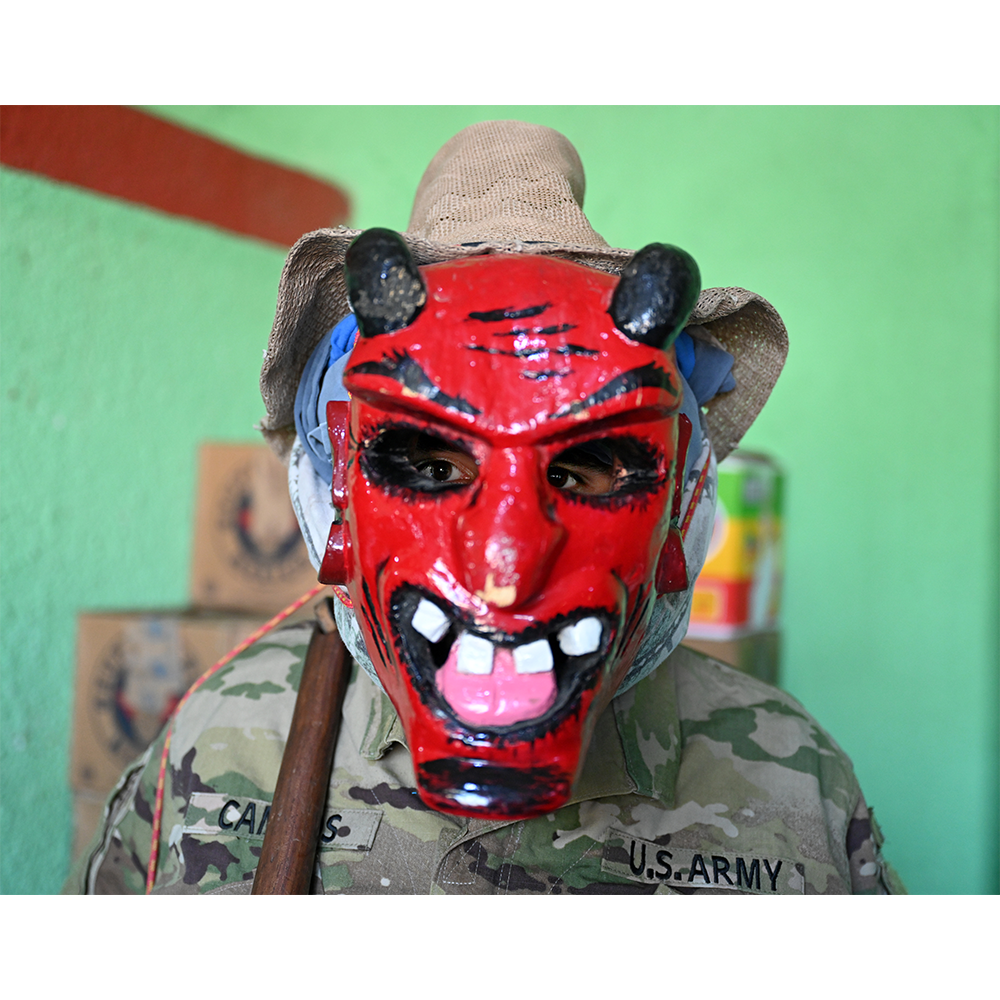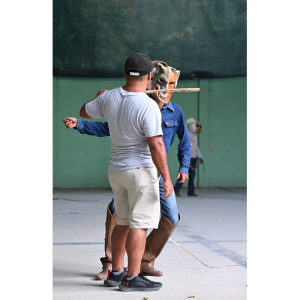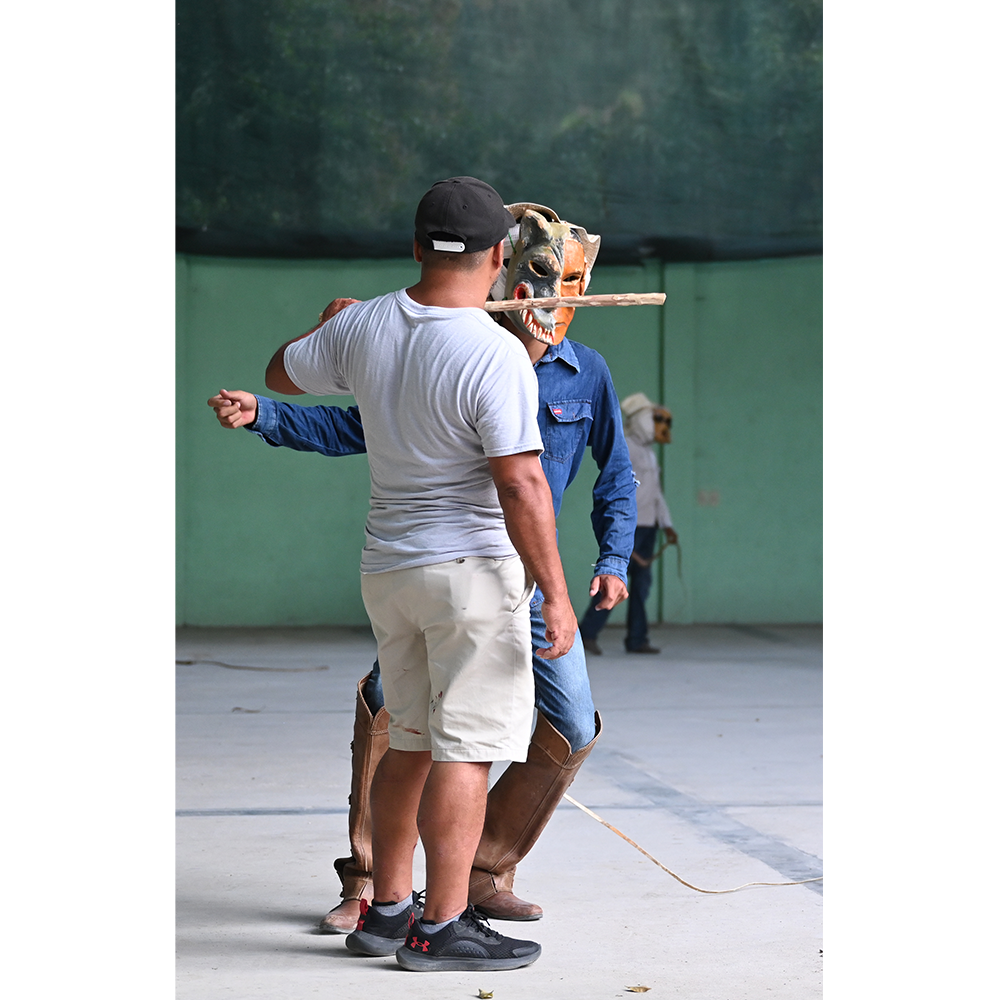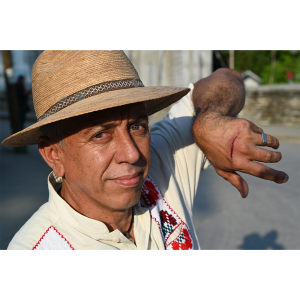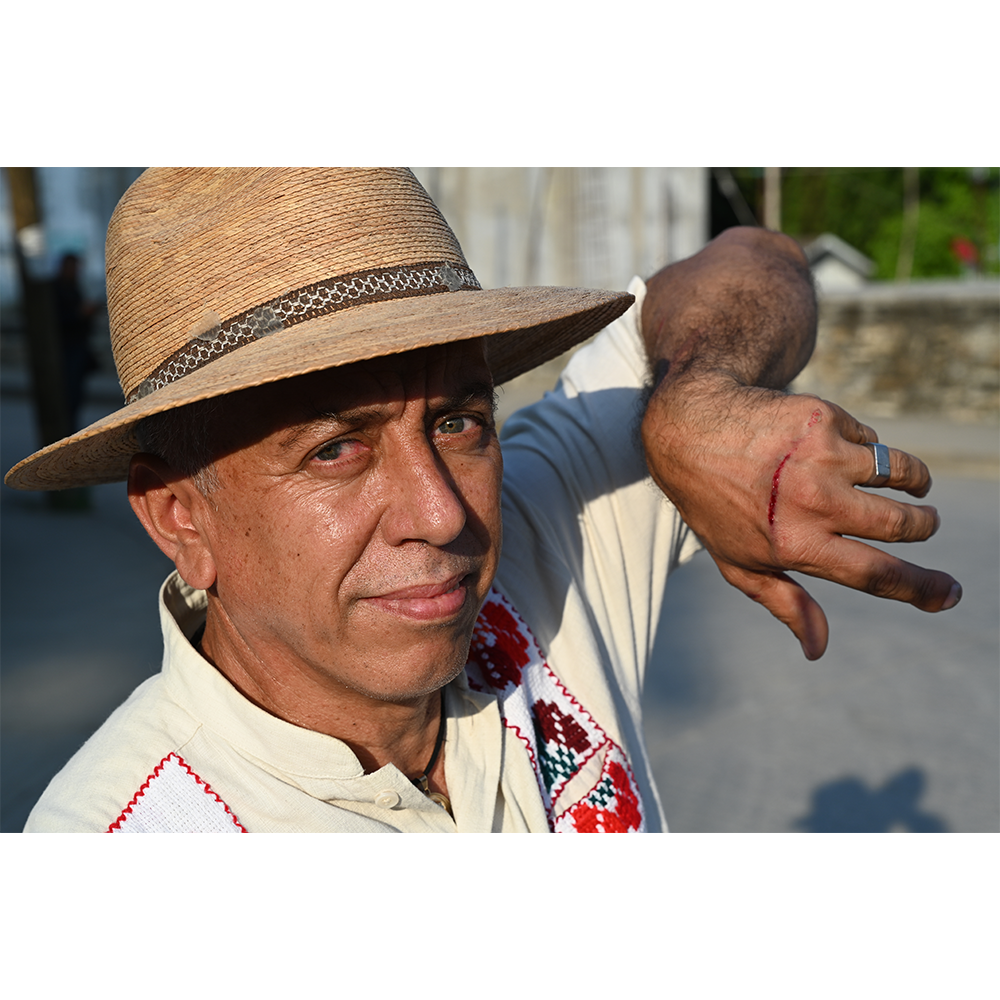TITLE: Toreada Devil (Cyclops) Mask
TYPE: face mask
GENERAL REGION: Latin America
COUNTRY: Mexico
SUBREGION: San Luís Potosí
ETHNICITY: Tenek
DESCRIPTION: Devil mask in the form of a cyclops
CATALOG #: LAMX114
MAKER: Carlos Victor Larrage Gómez (1969- , Tanlajás)
CEREMONY: Toreada de los Diablos (Holy Week)
AGE: 2019
MAIN MATERIAL: pemoches wood (Erythrina americana)
OTHER MATERIALS: oil-based paint
The Toreada de los Diablos (Bullfight of the Devils) of Tanlajás, San Luís Potosí, is a ritual performed that has been performed by the male inhabitants of the town during the Semana Santa (Holy Week) since at least the 1880s in its modern incarnation. The diablos wear a variety of Xantolo-type masks that, although they are supposed to represent “devils,” may also appear as skulls, monkeys, clowns, old men or women, or in any other form of (preferably ugly) character. The idea underlying the diversity of appearances is that the Devil, personification of evil, can take any form, and so a Christian must be constantly on guard. Historically, the devils policed the church to ensure nobody was drinking or otherwise violating social rules. During the ritual today, the devils attempt to whip the legs of the “toreador” (bullfighter) with rawhide whips called chirriones. The toreador defends himself with a short stick (about 60 cm) and his own agility. The toreador tries constantly to approach the devil to reduce the force of the whip and to tap the devil’s face with his stick. In the past, the ritual was even more violent, with the toreador attempting to break the mask with his stick, until he succeeded or was disabled by whip wounds. The purpose of breaking the mask was twofold, both to punish the devil and to reveal who was wearing the mask (with the result that the other devils would rally around him to hide his identity). Today, the stick blow to the mask is only symbolic, but the wounds sustained by the toreador in the course of the ritual are quite real and often severe. They are intended for the participant to share in Jesus’s suffering. In consequence, there is much beer drinking among them to help dull the pain.
On Easter Sunday, the final day of the Toreada, all the devils parade around the village with the Mono (monkey) astride a donkey. The Mono is not a monkey at all, but an anthropomorphic figure dressed as a devil (with mask, boots, a jumpsuit, overalls, boots, hat, and a whip), filled with gunpowder, fireworks, and sawdust. The devils parade with the monkey to announce the culmination of the Toreada in the evening. The Mono is symbolically hung before the final Toreada performance, and the devils read a “will” that was prepared beforehand with satiric, humorous content, poking fun of the pecadillos of the villagers. The Mono is then burned to signal the end of the ritual, with explosions and rockets, to symbolize the triumph of good over evil.
It is possible that the Toreada de los Diablos is a syncretic tradition coopted by the Catholic church, which may have begun as a war ritual of the Tenek people as they prepared to defend themselves against the neighboring Nahua. The imperialistic Catholic missionaries, as they often did in the New World, re-formulated the tradition into the mold of the Catholic world view, which simplifies the universe into a Manichean struggle of good (the toreadores) versus evil (the diablos).
Click above to watch a short documentary about the Toreada de los Diablos of Tanlajás, Mexico.
